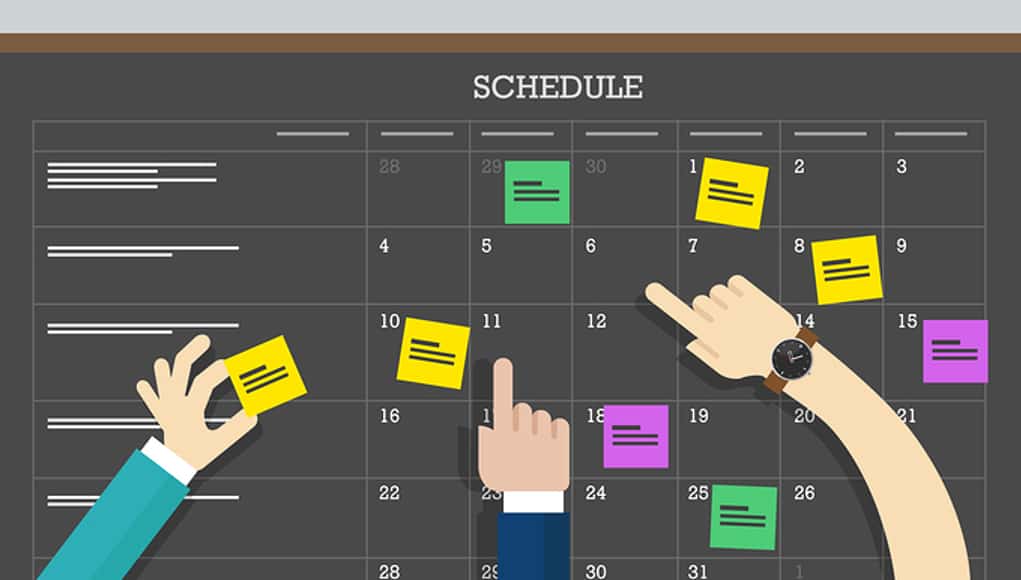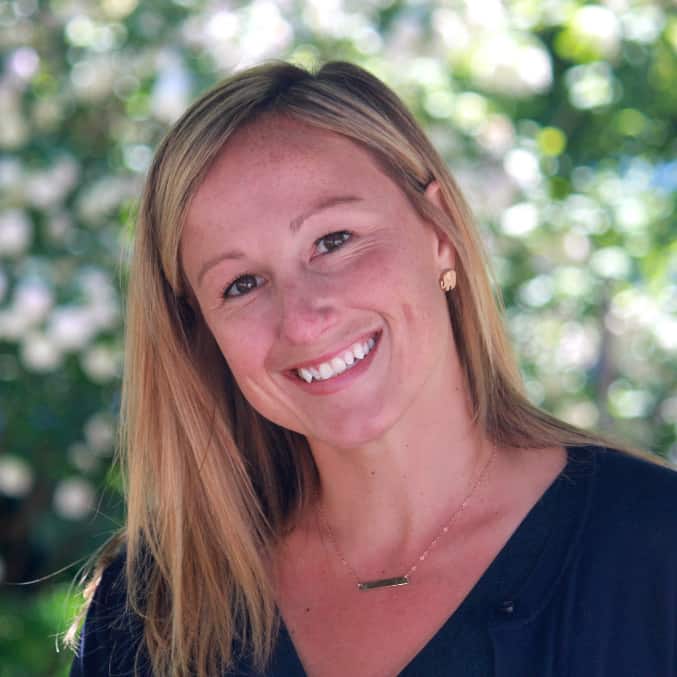Scheduling for Learning, Not Convenience

By Emily Liebtag and Mary Ryerse
A/B, 4X4, or traditional block? Six, seven or eight-period day? Within those structures, what strategies for flexibility exist?
When it comes to secondary school scheduling, there are many options. Which schedule is best? It depends on what you’re trying to accomplish. There are 4 basic steps to schedule development:
- Determine goals
- Understand parameters
- Select underlying structure
- Incorporate flexibility
This blog focuses on the latter two, including examples of underlying structures and strategies for flexibility. Regardless of what structure is selected for a schedule, it is oh-so-important to build in strategies (and time slots) for scheduling flexibility that matches today’s learning.
Moving from Traditional Scheduling to Flexible Scheduling
For years, schools have operated in a system where subjects were confined to 45-55 minute blocks of time (e.g 1st-period math, 2nd-period science, etc). Such schedules (traditional) were created under an industrial model and prioritized factors such as: 1) structured use of time, 2) easy staffing, and 3) the Carnegie Unit.
In our increasingly project-based world, there is a greater degree of recognition that content isn’t learned or consumed in isolation. Ideally, learning is interdisciplinary and connected. Time constraints and stringent schedules can get in the way when thinking about how to create innovative ideas and divergent thinking. The Carnegie Unit, while still in full-force in many institutions, is starting to hold less and less weight and the focus is more on competencies.
Before addressing strategies for flexible scheduling, it’s important to take a look at the core underlying scheduling structure options.
The Underlying Structure: Types of Schedules
There are several broad categories of schedules, each with identifiable pros and cons. Our outline, below, is intended to serve as a broad introduction to scheduling types–there are as many iterations to each of these models as one could imagine.
Traditional 6-Period Day
A traditional 6 period day consists of 45-55 minute subject course periods with lunch, possibly homeroom, and electives built in.
As mentioned above, historically the “default” schedule for most schools has consisted of a series of six periods each day that may rotate on a semester or trimester basis. This is the simplest schedule in terms of staffing assignments, master schedule development, bussing, lunch scheduling and anything else that’s traditionally been part of the secondary school experience.
Block Scheduling
Larger chunks of time for each subject or for interdisciplinary learning. Block schedules often require rotating subjects in order to accommodate enough time for each. The range of time for blocks varies and can be anywhere from 75 minutes to as long as 180 minutes.
There are numerous variations, all of which extend the period (some by taking 4 classes per term; others by alternating days with 6-8 courses total) An analysis from the Department of Public Instruction in North Carolina suggests that there are benefits of a block schedule. Amongst the benefits, teachers stated that there are more opportunities for electives and chances to take advanced courses. Students in a 4×4 block schedule have been shown to have higher achievement in science classes compared to those in a more traditional seven-period schedule.

7 & 8 Period Day
An iteration of the six-period day, a 7 or 8 period day allows for students to enroll in additional electives (this is particularly helpful for providing options for students interested in the visual and performing arts, work-based learning and/or world languages).
David London who is the Principal of Punxsutawney High School in Pennsylvania shared advantages of both seven- and eight-period school days. “Students can take more credits and gives them the opportunity to take another class. Work release and dual enrollment programs that students often really need, especially if they are striving to finish early or to catch up, can be the eighth course. Labs and electives that enhance core content course understanding are also examples of potential additional classes students can take with an eight-period day.

Inherently Flexible Customized Schedule
Some schools design their own scheduling structure. While there may be components reminiscent of block or traditional schedules, many schools are beginning to use time in ways that best serve the learning model rather than trying to live within the confines of traditional structures.
Robyn Bagley (@gallagherrobyn), Founder and former Principal of Career Path High, made sure that there was a blended and flexible schedule that did not have bells running students’ days. Students at Career Path are encouraged to work at their own pace and from any location. This allows for highly personalized learning, with success measured by course completion and not marked by a calendar deadline and time for internships and apprenticeships. While there are still Career Path Learning Center requirements, such as PBL collaboration, weekly success-coach meetings and interventions when needed, students truly have much more choice in their learning day.
At many schools, there is a push to eliminate bells and a rigid structure altogether. When interdisciplinary learning is the goal of a school, this flexibility can be crucial to sustained work on projects and collaboration.
Incorporating Flexibility: 4 Characteristics of Effective Schedules
We have certainly seen a myriad of different schedules work for middle and high schools across the country, but there are similar characteristics across their plans:
1. Work Sessions. Big chunks of time wherein students can work on interdisciplinary projects are crucial. Even if working within a seven- or eight-period day, find ways to combine time when possible and allow for extended work sessions. If the day becomes too truncated, many complain that the effect is a “shopping mall high school” where students don’t work on rigorous tasks due to the lack of concentrated and focused time. The constant transition between classes results in a loss of instructional time. One good example we’ve seen is Reynoldsburg High School, which has two facilities and four academies including eSTEM featuring triple blocks on big topics like Energy, Environment and the Economy.
2. Less Rigidity. Even if the school isn’t operating under a block schedule or it doesn’t have big chunks of student work time, the bell cannot be an inhibitor to student creativity. Schools ought to try to find ways to encourage students to persist when they are in the middle of a task or challenge and not penalize them for being late to another in those circumstances. This is particularly important for students who may need that extra time to grapple with ideas or master concepts. At Thrive Public Schools, a charter network with an elementary and middle school, Wednesdays are “completely flexible based on community and student needs. These days also end at 1:30 to provide teachers more professional collaboration time.”

3. Time for Multi-Use Spaces. Maker-spaces, labs and playgrounds are becoming commonplace in schools that intend to create innovative and dynamic thinkers that are prepared for 21st-century life and jobs. Often, spaces that house powertools, 3-d printers or even just the latest computers are not omnipresent throughout a school and are located in 2-3 rooms. These learning spaces need to be used freely and frequently. If a student is working on designing an app, but “computer lab time” isn’t until next week, inevitably their thought process is stunted. Schedules that promote active learning ensure that multi-use spaces are used often and are seen as places that students can go to when it makes sense in their respective projects or assignments–not “only when it fits in the schedule.”
For our final point, perhaps most importantly…. (drumroll please) ADVISORY!
4. Advisory.. Advisory is key to personalizing the secondary experience for students. By the time students get to middle school, many already feel that they don’t have a true course or path, nor do they have the support to help them find and navigate their way–enter strong advisory. Unlike counseling and advisory, the last two years of high school are to help you determine whether college or heading straight into work is the right choice. Advisory today includes a lot more. Advisory entails things like coaching on projects and teamwork or helping students get that extra 20 minutes of one-on-one instruction they need. Beth Brodie of Partnership for Change notes that a key function of the advisor is to ensure that every student has someone “who knows them well and supports them at school meetings and conferences.”

Some great examples of schools doing advisory right are the following:
- e3 Civic Advisory Model. Recently named by CNN as one of the most innovative schools in the United States, e3 Civic High School starts most days with an advisory block.

- Del Lago Academy Advisory Schedule. Students meet with advisors every Wednesday. “The main purpose of advisory is to create and build positive relationships between scholars, as well as between teachers and scholars. Advisory topics will focus on creating community, academic advisement, postsecondary planning and social and emotional learning.”

Students at Science Leadership Academy meet with an advisor twice weekly for an hour. Advisory serves both strictly academic and social and emotional goals for students. This time should be crafted to address personal and academic goals.
Conclusion
Ultimately, the schedule needs to align with the school mission and goals. Regardless of what schedule is put into place, if the goal is to have true active learning where students can collaborate, create and work on interdisciplinary projects, the daily schedule ought to include several components.
For more, see:
- Developing Self-Directed Learners
- How Schools Improve
- Innovating Large-Scale Assessments: Design Considerations for Education Leaders
Stay in-the-know with all things EdTech and innovations in learning by signing up to receive the weekly Smart Update.








Tam
Can you advise me a system for scheduling Personalized learning?
Jon Szychlinski II
As I see these schedule models I do not see anytime time for PE / Health or specials. Where do they fit in the schedule?
Replies
Kandy "DingDong" Kane
PE is not needed and it clearly has not worked -- American kids are obese and dumb in math
Replies
PE Teacher
As your name implies, you, Kandy are a Ding Dong. PE is not needed to make our kids less obese. We are only with them for a short time compared to their parents/guardians who are the ones buying the videos games they play, and the food they eat.